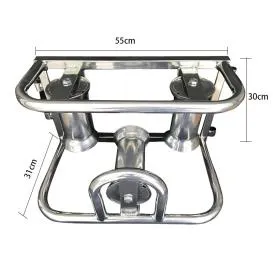
-
 Afrikaans
Afrikaans -
 Albanian
Albanian -
 Amharic
Amharic -
 Arabic
Arabic -
 Armenian
Armenian -
 Azerbaijani
Azerbaijani -
 Basque
Basque -
 Belarusian
Belarusian -
 Bengali
Bengali -
 Bosnian
Bosnian -
 Bulgarian
Bulgarian -
 Catalan
Catalan -
 Cebuano
Cebuano -
 Corsican
Corsican -
 Croatian
Croatian -
 Czech
Czech -
 Danish
Danish -
 Dutch
Dutch -
 English
English -
 Esperanto
Esperanto -
 Estonian
Estonian -
 Finnish
Finnish -
 French
French -
 Frisian
Frisian -
 Galician
Galician -
 Georgian
Georgian -
 German
German -
 Greek
Greek -
 Gujarati
Gujarati -
 Haitian Creole
Haitian Creole -
 hausa
hausa -
 hawaiian
hawaiian -
 Hebrew
Hebrew -
 Hindi
Hindi -
 Miao
Miao -
 Hungarian
Hungarian -
 Icelandic
Icelandic -
 igbo
igbo -
 Indonesian
Indonesian -
 irish
irish -
 Italian
Italian -
 Japanese
Japanese -
 Javanese
Javanese -
 Kannada
Kannada -
 kazakh
kazakh -
 Khmer
Khmer -
 Rwandese
Rwandese -
 Korean
Korean -
 Kurdish
Kurdish -
 Kyrgyz
Kyrgyz -
 Lao
Lao -
 Latin
Latin -
 Latvian
Latvian -
 Lithuanian
Lithuanian -
 Luxembourgish
Luxembourgish -
 Macedonian
Macedonian -
 Malgashi
Malgashi -
 Malay
Malay -
 Malayalam
Malayalam -
 Maltese
Maltese -
 Maori
Maori -
 Marathi
Marathi -
 Mongolian
Mongolian -
 Myanmar
Myanmar -
 Nepali
Nepali -
 Norwegian
Norwegian -
 Norwegian
Norwegian -
 Occitan
Occitan -
 Pashto
Pashto -
 Persian
Persian -
 Polish
Polish -
 Portuguese
Portuguese -
 Punjabi
Punjabi -
 Romanian
Romanian -
 Russian
Russian -
 Samoan
Samoan -
 Scottish Gaelic
Scottish Gaelic -
 Serbian
Serbian -
 Sesotho
Sesotho -
 Shona
Shona -
 Sindhi
Sindhi -
 Sinhala
Sinhala -
 Slovak
Slovak -
 Slovenian
Slovenian -
 Somali
Somali -
 Spanish
Spanish -
 Sundanese
Sundanese -
 Swahili
Swahili -
 Swedish
Swedish -
 Tagalog
Tagalog -
 Tajik
Tajik -
 Tamil
Tamil -
 Tatar
Tatar -
 Telugu
Telugu -
 Thai
Thai -
 Turkish
Turkish -
 Turkmen
Turkmen -
 Ukrainian
Ukrainian -
 Urdu
Urdu -
 Uighur
Uighur -
 Uzbek
Uzbek -
 Vietnamese
Vietnamese -
 Welsh
Welsh -
 Bantu
Bantu -
 Yiddish
Yiddish -
 Yoruba
Yoruba -
 Zulu
Zulu


Nov . 22, 2024 20:13 Back to list
shackle types rigging
Understanding Shackle Types in Rigging
Rigging is an essential part of various industries, including construction, maritime operations, and entertainment. One crucial component of rigging is the shackle, which serves as a connector between various lifting and rigging equipment. The design and type of shackle can significantly affect the safety and effectiveness of a lifting operation. Understanding different shackle types and their applications is vital for anyone involved in rigging.
Types of Shackles
There are several types of shackles used in rigging, each designed for specific applications
. The two most common types are bow shackles and D-shackles.1. Bow Shackles Recognized for their wide body and curved design, bow shackles are versatile connectors. They can handle loads from various angles, making them suitable for applications where the load may not be directly aligned. The bow shape allows for a rotation of the load without causing excess wear on the shackle. These are ideal for lifting applications where multiple rigging points are required, as they can accommodate multiple hooks or slings.
2. D-Shackles The D-shackle has a more linear design and is often used in situations where the load is well-aligned with the pin. Its shape offers high strength and is popular in applications requiring precision. D-shackles are commonly used in marine environments, as they can be easily secured and prevent slippage. However, they might not be suitable for applications that involve load angles due to their limited capacity to handle side loads.
3. Safety Shackles Safety shackles come equipped with a locking mechanism that prevents accidental opening of the shackle. This feature is crucial in environments where the rigging equipment experiences frequent movement or vibration. Safety shackles can be either bow or D-type and offer enhanced security for lifting operations.
4. Round Pin Shackles These are similar to D-shackles but feature a round pin that makes them easier to assemble and disassemble, even when they are under load. They are often used in heavy lifting scenarios where quick detachment and reattachment are necessary.
shackle types rigging

Selecting the Right Shackle
Choosing the appropriate shackle for a rigging operation involves several factors
- Load Weight Always calculate the load's weight and ensure the shackle can support it. Shackles are typically rated for certain loads, denoted by their working load limit (WLL). It's crucial to select a shackle with a WLL significantly higher than the expected load to ensure safety.
- Environmental Conditions Consider the working environment. Shackles used in marine settings, for example, should be made of corrosion-resistant materials, such as stainless steel or galvanized steel, to withstand harsh conditions.
- Type of Load Evaluate the type of load being lifted. If the load will be subjected to side loads, a bow shackle may be more appropriate. Conversely, for straightforward lifts, a D-shackle might suffice.
- Ease of Use Depending on the frequency of assembly and disassembly, you may opt for a pin design that allows for quick connections, such as round pin shackles.
Conclusion
In conclusion, shackles play a pivotal role in rigging operations across various industries. Understanding the different types of shackles, including bow and D-shackles, safety shackles, and round pin shackles, is essential to ensure safety and efficiency during lifting operations. By carefully selecting the right shackle for the specific application, you can mitigate risks associated with lifting and enhance the overall effectiveness of rigging practices. Always prioritize safety by adhering to weight limits and using shackles that are appropriate for the rigging environment.
Latest news
What Are Construction Tools and How Are They Used?
NewsJul.11,2025
Professional-Grade Duct Rodding Tools for Superior Cable Installation
NewsJul.11,2025
Enhancing Safety and Efficiency with Modern Hot Stick Solutions
NewsJul.11,2025
Empowering Cable Installation with Advanced Rodder Solutions
NewsJul.11,2025
Elevate Your Cable Installation Projects with Cable Pulling Tools
NewsJul.11,2025
Efficient Cable Handling Solutions: Cable Rollers for Sale
NewsJul.11,2025











